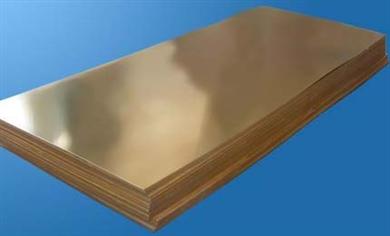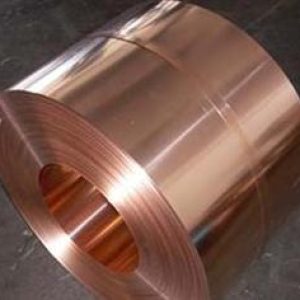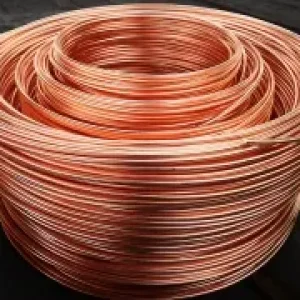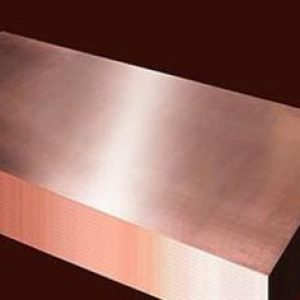Copper Materials Overview
Copper materials include copper plates, copper rods, copper tubes, copper strips, copper wires, copper bars, and copper materials.
Copper Materials Types
Copper plate
Copper plate is a highly stable, low-maintenance roofing and curtain wall material that is environmentally friendly, safe to use, easy to process and extremely corrosion-resistant.
Aluminum bronze, tin bronze, silicon bronze, beryllium bronze, red copper, brass, white copper, tungsten copper, red copper, oxygen-free copper.
Copper plate classification: aluminum bronze plate, brass plate, tin bronze plate, silicon bronze plate, beryllium bronze plate, tungsten copper plate, red copper plate, red copper plate, oxygen-free copper plate, copper plates of various specifications/models.
Commonly used copper plate grades: H62, H65, H68, H70, H80, H90, C2600, C2680, C2700, C5210, C5191, C51000, QBe2.0, C1100, T2, etc.
Copper rod
Copper rod is a kind of non-ferrous metal processing rod with good processing performance and high electrical conductivity. Mainly divided into brass rods (copper-zinc alloy, cheaper) and red copper rods (higher copper content).
Aluminum bronze, tin bronze, silicon bronze, beryllium bronze, red copper, brass, white copper, tungsten copper, red copper, oxygen-free copper.
Copper rod classification: aluminum bronze rod, tin bronze rod, silicon bronze rod, beryllium bronze plate, brass plate, white copper plate, red copper plate, red copper plate, tungsten copper plate, oxygen-free copper plate, copper plate of various materials.
Commonly used grades: H59, HPb59-1, HPb59-3, H62, H65, H68, H70, H80, H90, C2600, C2680, C2700, C5210, C5191, C51000, QBe2.0, C1100, T2, etc.
General specifications: diameter: φ1.0-200mm, length: 2500-6000mm.
Copper pipe
Copper tube is also called purple copper tube. A kind of non-ferrous metal pipe, it is a pressed and drawn seamless pipe. Copper pipes are strong and corrosion-resistant, and have become the first choice for modern contractors to install water pipes, heating and cooling pipes in all residential commercial buildings. Copper pipes are the best water supply pipes.
Aluminum bronze, tin bronze, silicon bronze, beryllium bronze, tungsten copper, white copper, brass, red copper, red copper, oxygen-free copper.
Aluminum bronze tube, tin bronze tube, silicon bronze tube, beryllium bronze tube, brass tube, white copper tube, red copper tube, red copper tube, tungsten copper tube, oxygen-free copper tube, various types of copper tube.
Commonly used grades: H62, H65, H68, H63, H70, H80, H90, C2600, C2680, C2700, C5210, C5191, C51000, QBe2.0, C1100, T2, etc.
General specifications: wall thickness: 0.1-100mm, outer diameter: 1-600mm.
Copper strip
Copper strip is a kind of metal component. The product specifications are 0.1~3×50~250mm. Copper strip products in various states are mainly used to produce electrical components, lamp holders, battery caps, buttons, seals, connectors, and are mainly used for conductive purposes. , thermal conductivity, corrosion resistance equipment. Such as electrical components, switches, washers, gaskets, electric vacuum devices, radiators, conductive base materials and various parts such as automobile water tanks, heat sinks, cylinder sheets, etc.
Aluminum bronze, tin bronze, silicon bronze, beryllium bronze, tungsten copper, white copper, brass, red copper, red copper, oxygen-free copper.
Aluminum bronze strip, tin bronze strip, silicon bronze strip, beryllium bronze strip, brass strip, white copper strip, red copper strip, red copper strip, tungsten copper strip, oxygen-free copper strip, copper strip of various specifications.
Commonly used grades: H62, H65, H68, H63, H70, H80, H90, C2600, C2680, C2700, C5210, C5191, C51000, QBe2.0, C1100, T2, etc.
Specifications: thickness: 0.01-2.0mm, width: 4-600mm.
Copper wire
It has good electrical conductivity, thermal conductivity, corrosion resistance and processing properties, and can be welded and brazed. It contains less impurities that reduce electrical and thermal conductivity, and a trace amount of oxygen has little effect on electrical conductivity, thermal conductivity and processing properties, but it can easily cause “hydrogen disease” and is not suitable for processing (annealing, welding, etc.) and use.
Aluminum bronze, tin bronze, silicon bronze, beryllium bronze, tungsten copper, white copper, brass, red copper, red copper, oxygen-free copper.
Aluminum bronze wire, tin bronze wire, silicon bronze wire, beryllium bronze wire, brass wire, white copper wire, red copper wire, red copper wire, tungsten copper wire, oxygen-free copper wire, copper wire of various specifications.
Commonly used grades: H62, H65, H68, H70, H80, H90, C2600, C2680, C2700, C5210, C5191, C51000, QBe2.0, C1100, T2, etc.
Specifications: Wire diameter: 0.01-15.0mm
Copper row
Copper bar is a high current conductive product, suitable for high and low voltage electrical appliances, switch contacts, distribution equipment, bus duct and other electrical engineering projects. It is also widely used in metal smelting, electrochemical plating, chemical caustic soda and other ultra-high current electrolytic smelting projects. The electrical copper bars we supply have the advantages of low resistivity and high bendability.
Aluminum bronze, tin bronze, silicon bronze, beryllium bronze, tungsten copper, white copper, brass, red copper, red copper, oxygen-free copper.
Aluminum bronze rows, tin bronze rows, silicon bronze rows, beryllium bronze rows, brass rows, white copper rows, red copper rows, red copper rows, tungsten copper rows, oxygen-free copper rows, copper rows of various specifications.
Commonly used grades: H59, H62, H65, C2700, C2680, C2600, H68, H70, C5210, C5191, C51000, QBe2.0, etc.
Specifications: thickness: 1-100mm, width: 10-400mm.
Natural Properties of Copper
Copper is one of the earliest ancient metals discovered by humans. Humans began to use copper more than 3,000 years ago. Copper in nature is divided into natural copper, copper oxide ore and copper sulfide ore. The reserves of natural copper and copper oxide are small. Now more than 80% of the world’s copper is refined from copper sulfide ore. The copper content of this ore is extremely low, generally around 2-3%. Metal copper, element symbol Cu, atomic weight 63.54, specific gravity 8.92, melting point 1083Co. Pure copper is light rose or light red. Copper has many valuable physical and chemical properties, such as high thermal conductivity and electrical conductivity, strong chemical stability, high tensile strength, easy welding, corrosion resistance, plasticity, and ductility. Pure copper can be drawn into very fine copper wires and made into very thin copper foil. It can form alloys with zinc, tin, lead, manganese, cobalt, nickel, aluminum, iron and other metals. The alloys formed are mainly divided into three categories: brass is a copper-zinc alloy, bronze is a copper-tin alloy, and white copper is a copper-cobalt-nickel alloy. The development of copper metallurgical technology has gone through a long process, but so far copper smelting is still dominated by pyrometallurgical smelting, whose output accounts for about 85% of the world’s total copper production. Modern hydrometallurgical smelting technology is gradually being promoted, and it is expected that it will be available by the end of this century. Reaching 20% of the total output, the introduction of hydrometallurgy has greatly reduced the cost of copper smelting.
Copper Materials Feature
Brass is an alloy composed of copper and zinc
White copper is an alloy of copper and nickel
Bronze is an alloy formed of copper and elements other than zinc and nickel, mainly including tin bronze, aluminum bronze, etc.
Red copper is copper with a high copper content, and the total content of other impurities is less than 1%.
Red copper/red copper
Red copper is pure copper, also known as red copper. The density of pure copper is 8.96 and the melting point is 1083°C. It has good electrical and thermal conductivity, excellent plasticity, and is easy to process by hot pressing and cold pressing. It is widely used in the manufacture of wires, cables, brushes, special electro-eroded copper for electric sparks and other products that require good electrical conductivity.
It is named after its purple-red color. It is not necessarily pure copper. Sometimes a small amount of deoxidizing elements or other elements are added to improve the material and performance, so it is also classified as a copper alloy. China’s red copper processing materials can be divided into: ordinary red copper (T1, T2, T3, T4), oxygen-free copper (TU1, TU2 and high-purity, vacuum oxygen-free copper), deoxidized copper (TUP, TUMn), adding a small amount of alloy There are four types of special copper elements (arsenic copper, tellurium copper, and silver copper).
The electrical conductivity and thermal conductivity of red copper are second only to silver, and it is widely used in making electrical and thermal conductive equipment. Copper has good corrosion resistance in the atmosphere, seawater, certain non-oxidizing acids (hydrochloric acid, dilute sulfuric acid), alkali, salt solutions and various organic acids (acetic acid, citric acid) and is used in the chemical industry. In addition, red copper has good weldability and can be made into various semi-finished products and finished products through cold and hot plastic processing. In the 1970s, the output of red copper exceeded the total output of other types of copper alloys.
Trace impurities in copper have a serious impact on the electrical and thermal conductivity of copper. Among them, titanium, phosphorus, iron, silicon, etc. significantly reduce the electrical conductivity, while cadmium, zinc, etc. have little effect. The solid solubility of oxygen, sulfur, selenium, tellurium, etc. in copper is very small, and can form brittle compounds with copper, which has little effect on conductivity, but can reduce processing plasticity. When ordinary copper is heated in a reducing atmosphere containing hydrogen or carbon monoxide, the hydrogen or carbon monoxide easily interacts with the cuprous oxide (Cu2O) at the grain boundary to produce high-pressure water vapor or carbon dioxide gas, which can cause the copper to crack. This phenomenon is often called “hydrogen disease” of copper. Oxygen is harmful to the weldability of copper. Bismuth or lead forms a low melting point eutectic with copper, causing copper to become thermally brittle; and when brittle bismuth is distributed in a thin film at the grain boundaries, it causes copper to become cold brittle. Phosphorus can significantly reduce the conductivity of copper, but can increase the fluidity of copper liquid and improve weldability. Appropriate amounts of lead, tellurium, sulfur, etc. can improve machinability.
Brass:
Copper alloys with zinc as the main added element have a beautiful yellow color and are collectively referred to as brass. Copper-zinc binary alloy is called ordinary brass or simple brass. Brass with more than three elements is called special brass or complex brass. Brass alloys containing less than 36% zinc are composed of solid solutions and have good cold working properties. For example, brass containing 30% zinc is often used to make bullet cases, commonly known as bullet case brass or 73 brass. Brass alloys containing 36 to 42% zinc are composed of solid solution and the most commonly used is 64 brass containing 40% zinc. In order to improve the performance of ordinary brass, other elements are often added, such as aluminum, nickel, manganese, tin, silicon, lead, etc. Aluminum can improve the strength, hardness and corrosion resistance of brass, but reduces the plasticity. It is suitable for use as condensation tubes and other corrosion-resistant parts for sea vessels. Tin can improve the strength of brass and its corrosion resistance to seawater, so it is called naval brass and is used for ship thermal equipment and propellers. Lead improves the cutting properties of brass; this free-cutting brass is often used as watch parts. Brass castings are commonly used to make valves and pipe fittings.
Bronze:
Originally refers to copper-tin alloy, later copper alloys except brass and white copper are called bronze, and the name of bronze is often preceded by the name of the first main added element. Tin bronze has good casting properties, good friction reduction properties and good mechanical properties, and is suitable for manufacturing bearings, worm gears, gears, etc. Lead bronze is a widely used bearing material in modern engines and grinding machines. Aluminum bronze has high strength, good wear resistance and corrosion resistance, and is used to cast high-load gears, bushings, marine propellers, etc. Beryllium bronze and phosphor bronze have high elastic limit and good electrical conductivity, and are suitable for manufacturing precision springs and electrical contact components. Beryllium bronze is also used to manufacture non-sparking tools used in coal mines, oil depots, etc.
White copper:
Copper alloy with nickel as the main added element. The copper-nickel binary alloy is called ordinary cupronickel; the cupronickel alloy with elements such as manganese, iron, zinc, aluminum and so on is called complex cupronickel. Industrial white copper is divided into two categories: structural white copper and electrical white copper. Structural white copper is characterized by good mechanical properties and corrosion resistance, and beautiful color. This kind of white copper is widely used in the manufacture of precision machinery, chemical machinery and ship components. Electrical white copper generally has good thermoelectric properties.
Manganese copper, constantan, and kaotan are manganese-nickel copper with different manganese content. They are materials used for manufacturing precision electrical instruments, varistors, precision resistors, strain gauges, thermocouples, etc.
- Brass
1) Ordinary brass: It is an alloy composed of copper and zinc. When the zinc content is less than 39%, zinc can dissolve in copper to form single-phase a, which is called single-phase brass. It has good plasticity and is suitable for hot and cold press processing. When the zinc content is greater than 39%, there is a single phase and b solid solution based on copper and zinc, which is called dual-phase brass. b makes the plasticity small and the tensile strength increases, and is only suitable for hot pressure processing. If the mass fraction of zinc continues to be increased, the tensile strength will decrease and it will have no use value. The code is represented by “H + number”, H represents brass, and the number represents the mass fraction of copper. For example, H68 means brass with a copper content of 68% and a zinc content of 32%. Cast brass has the word “Z” before the code, such as ZH62 and Zcuzn38, which means a zinc content of 38% and the balance is copper. Cast brass. H90 and H80 are single-phase, golden yellow, so they are collectively called gold, and are called coatings, decorations, medals, etc. H68 and H59 are duplex brass, which are widely used in structural parts of electrical appliances, such as bolts, nuts, washers, springs, etc. Generally, single-phase brass is used for cold deformation processing and duplex brass is used for hot deformation processing.
2) Special brass: A multi-component alloy formed by adding other alloying elements to ordinary brass is called brass. Commonly added elements include lead, tin, aluminum, etc., which can be called lead brass, tin brass, and aluminum brass accordingly. The purpose of adding alloying elements. The main purpose is to increase the tensile strength and improve the workmanship. Code: It is expressed as “H + symbol of the main plus element (except zinc) + mass fraction of copper + mass fraction of the main plus element + mass fraction of other elements”. For example, HPb59-1 means lead brass with a mass fraction of 59% copper, a mass fraction of lead as the main additive element, and zinc as the balance.
- Bronze: Except for brass and white copper, all other copper alloys are collectively called bronze. Bronze can be divided into two categories: tin bronze and special bronze (i.e. Wuxi bronze). Code: The representation method is “Q+ main plus element symbol and mass fraction + mass fraction of other elements”. For cast products, the word “Z” is added before the code. For example: Qal7 means aluminum bronze containing 7% aluminum and the rest is copper. ZQsn10-1 means the tin content is 10%, the other alloying elements are 1%, and the balance is Copper cast tin bronze.
1) Tin bronze: It is a copper-tin alloy composed of tin as the main plus element, also called tin bronze.
When the tin content is less than 5~6%, tin dissolves in copper to form a solid solution, and the plasticity increases. When the tin content is greater than 5~6%, the tensile strength decreases due to the emergence of a Cu31sb8-based solid solution, so the scale The tin content of tin bronze is mostly between 3~14%. When the tin content is less than 5%, it is suitable for cold deformation processing. When the tin content is 5~7%, it is suitable for hot deformation processing. When the tin content is greater than 10%, it is suitable for casting. Since the a and & electrode potentials are similar, and the tin in the composition is nitrided to form a dense tin dioxide film, the corrosion resistance to atmosphere, seawater, etc. is increased, but the acid resistance is poor. Because tin bronze has a wide crystallization temperature range and poor fluidity, it is not easy to form concentrated shrinkage cavities, but is prone to dendrite segregation and dispersed shrinkage cavities. The casting shrinkage is small, which is conducive to obtaining castings with dimensions very close to the casting mold, so it is suitable for casting. The shape is complex. Conditions with large wall thickness are not suitable for casting castings that require high density and good sealing properties. Tin bronze has good friction reducing properties, diamagnetic properties and low temperature toughness. According to the production method, tin bronze can be divided into two categories: pressure processing tin bronze and cast tin bronze.
- Pressure processed tin bronze: The tin content is generally less than 8%. It should be processed by hot and cold pressure into plates, strips, rods, tubes and other profiles for supply. After work hardening, its tensile strength and hardness increase, but its plasticity decreases. After re-annealing, the plasticity can be improved while maintaining high tensile strength, especially obtaining a high elastic limit. Adaptable instruments require corrosion-resistant and wear-resistant parts, elastic parts, anti-magnetic parts, and sliding bearings and bushings in machines. Commonly used ones are Qsn4-3 Qsn6.5~0.1.
- Cast tin bronze:It is supplied as ingots and is used to make castings in the foundry workshop. It is suitable for casting castings with complex shapes but low density requirements, such as sliding bearings, gears, etc. Commonly used ones are ZQsn10-1 ZQsn6-6-3.
2) Special bronze: Add other elements to replace tin, or use tin-free bronze. Most special bronzes have higher mechanical properties, wear resistance and corrosion resistance than tin bronze. Aluminum bronze (QAL7 QAL5) and lead bronze are commonly used. (ZQPB30) etc. Copper-based alloys with nickel as the main added element are silvery white and are called white copper. The nickel content is usually 10%, 15%, 20%. The higher the content, the whiter the color. The copper-nickel binary alloy is called ordinary cupronickel, and the copper-nickel alloy with elements such as manganese, iron, zinc and aluminum is called complex cupronickel. Adding nickel to pure copper can significantly improve the strength, corrosion resistance, resistance and thermoelectricity. According to different performance characteristics and uses, industrial white copper is divided into two types: structural white copper and electrical white copper, which respectively meet various corrosion resistance and special electrical and thermal properties.
Typical grades, chemical composition (%) (mass fraction): Sn (tin), Al (aluminum), Fe (iron), Pb (lead), Sb (antimony), Bi (bismuth), Si (silicon), P ( Phosphorus), Cu, total impurities.
Copper Materials Application
Applications in the electrical industry
Power transmission: Power transmission requires a large amount of highly conductive copper, which is mainly used for power applications. Line cables, busbars, transformers, switches, plug-in components and connectors, etc. During the power transmission process of wires and cables, electrical energy is wasted due to resistance heating. From the perspective of energy saving and economy, the “optimal cable cross-section” standard is currently being promoted in the world. The standards that were popular in the past were simply based on the perspective of reducing primary installation investment, in order to minimize the cable cross-section, so as to avoid dangerous overheating under the rated current required by the design, to determine the minimum allowable size of the cable. Although the installation cost of cables laid according to this standard is low, the resistance energy consumption is relatively large during long-term use. The “optimal cable cross-section” standard takes into account the two factors of one-time installation cost and power consumption, and appropriately enlarges the cable size to achieve energy saving and the best comprehensive economic benefits. According to the new standards, the cable cross-section is often more than double that of the old standards, which can achieve an energy saving effect of about 50%. In the past period of time, due to the shortage of steel and considering that the proportion of aluminum is only 30% of copper, China has taken measures to replace copper with aluminum in overhead high-voltage transmission lines hoping to reduce weight. At present, for environmental protection considerations, aerial transmission lines will be converted to underground cables. In this case, aluminum pales in comparison to copper, which suffers from poor conductivity and larger cable sizes. The same original circuit was replaced with an energy-saving and efficient copper winding transformer! Japanese aluminum winding transformers are also a wise choice.
Motor Manufacturing: In motor manufacturing, highly conductive and high-strength copper alloys are widely used. The main parts using copper are the stator, rotor and shaft head. In large motors, the windings need to be cooled with water or hydrogen, which is called double water internal cooling or hydrogen cooling motors, which requires large lengths of hollow wires. Motors are major users of electrical energy, accounting for approximately 60% of all electrical energy supply. The cumulative electricity bill for the operation of a motor is very high. Generally, it reaches the original cost of the motor within the first 500 hours of operation, which is equivalent to 4 to 16 times the cost within a year, and can reach 200 times the cost during the entire working life. A small increase in motor efficiency can not only save energy; it can also achieve significant economic benefits. The development and application of high-efficiency motors is a hot topic in the world. Since the energy consumption inside the motor mainly comes from the resistance loss of the winding; therefore, increasing the copper wire cross-section is a key measure to develop high-efficiency motors. In recent years, some high-efficiency motors that have been pioneered have used 25 to 100% more copper windings than traditional motors. Currently, the U.S. Department of Energy is funding a development project to produce motor rotors using cast copper technology.
Communication cables: Since the 1980s, due to their advantages such as large current-carrying capacity, optical fiber cables have continuously replaced copper cables on communication trunk lines and have been rapidly promoted and applied. However, a large amount of copper is still used to convert electrical energy into light energy and enter the user’s lines. With the development of communications, people are increasingly dependent on communications, and the demand for optical fiber cables and copper wires will continue to increase. Residential electrical wiring: In recent years, with the improvement of living standards of the Chinese people and the rapid spread of home appliances, residential electricity load has grown rapidly.
Applications in the mechanical and metallurgical industries: Copper parts can be found in almost all machines. In addition to the large amount of steel used in motors, circuits, hydraulic systems, pneumatic systems and control systems, there are a wide variety of transmission parts and fixed parts made of brass and bronze, such as gears, worm gears, worms, couplings, fasteners, torques, etc. Tightening parts, screws, nuts, etc. are everywhere. Bearings or bushings made of friction-reducing copper alloys must be used between almost all parts that make relative motion in machinery. In particular, the cylinder liners and slide plates of large 10,000-ton extruders and forging presses are almost all made of bronze. , castings can weigh several tons. Many elastic components are almost always made of silicon bronze and tin bronze. Welding tools, die-casting molds, etc. are inseparable from copper alloys, and so on.
Metallurgical equipment: The metallurgical industry is a large consumer of electric energy and is known as the “electric tiger”. In the construction of metallurgical plants, it is usually necessary to have a huge power transmission and distribution system and power operation equipment that rely on copper to perform work. In addition, in pyrometallurgy, continuous casting technology has taken a dominant position. The key component, the crystallizer, is mostly made of high-strength and high thermal conductivity copper alloys such as chromium copper and silver copper. Vacuum electric arc furnaces and electroslag furnace water-cooled crucibles in electrometallurgy are made of steel pipes. Various induction heating induction coils are wound with copper tubes or special-shaped copper tubes, and water is passed through them for cooling.
Alloy additives: Copper is an important additive element in alloys such as steel and aluminum. Adding a small amount of copper (0.2~0.5%) to low-alloy structural steel can improve the strength and resistance to atmospheric and marine corrosion of the steel. Adding copper to corrosion-resistant cast iron and stainless steel can further improve their corrosion resistance. The high-nickel alloy containing about 30% copper is the famous high-strength and corrosion-resistant “Monel alloy” and is widely used in the nuclear industry. Copper is found in many high-strength aluminum alloys. Through quenching and aging heat treatment, dispersed fine particles are precipitated in the alloy, thereby significantly improving its strength, which is called age-hardened aluminum alloy. The famous one is Duralumin, or duralumin, which is an aluminum alloy containing copper, manganese, and magnesium. It is an important structural material for manufacturing aircraft and rockets.
Applications in construction
Pipe system: Because steel water pipes have many advantages such as beauty, durability, ease of installation, safety, fire protection, and health care, they have a significantly superior price-performance ratio compared with galvanized steel pipes and plastic pipes. In residential and public buildings, it is used for water supply, heating, gas supply and fire sprinkler systems. It is increasingly favored by people and has become the current material of choice. In developed countries, copper water supply systems already account for a large proportion. The Manhattan Building in New York, USA, known as the sixth tallest building in the world, uses 60,000 feet (1 km) of copper pipes for its water supply system. In Europe, steel pipes for drinking water are consumed a lot. The average consumption of steel pipes for drinking water in the UK is 1.6 kilograms per person per year, and in Japan it is 0.2 kilograms. Because galvanized steel pipes are prone to rust, many countries have banned them. Hong Kong banned its use as early as January 1996, and Shanghai also implemented it in May 1998. It is imperative for China to promote the use of copper pipe systems in housing construction.
House decoration: There is a tradition in Europe of using steel plates to make roofs and eaves. It is even used as wall decoration in Nordic countries. Copper has good atmospheric corrosion resistance, is durable, and can be recycled. It has good processability and can be easily made into complex shapes, and it also has beautiful colors; therefore, it is very suitable for house decoration. Its application on the roofs of ancient buildings such as churches has a long history, and it still emits an attractive brilliance; and it is increasingly used in the construction of modern large-scale buildings and even apartments and houses. For example: in London, the “Commonwealth Council” building, which represents modern British architectural art, has a complex roof shape, is made of steel plates, and weighs about 25 tons; the Crystal Palace Sports Center, which opened in 1966, uses 60 tons of steel to make a corrugated roof. etc. According to statistics, the average annual consumption of copper plates used for roofs is 0.8 kilograms per person in Germany and 0.2 kilograms in the United States. In addition, the use of steel products in interior decoration, such as door handles, locks, shutters, buttons, lamps, wall decorations, kitchen utensils, etc., is not only durable and sanitary, but also embellishes an elegant atmosphere, which is deeply loved by people. favorite.
Company Profile
Copper Channel is a trusted global chemical material supplier & manufacturer with over 12-year-experience in providing super high-quality copper and relatives products.
The company has a professional technical department and Quality Supervision Department, a well-equipped laboratory, and equipped with advanced testing equipment and after-sales customer service center.
If you are looking for high-quality copper products, please feel free to contact us or click on the needed products to send an inquiry.
Payment Methods of Copper Materials
L/C, T/T, Western Union, Paypal, Credit Card etc.
Shipment of Copper Materials
It could be shipped by sea, by air, or by reveal ASAP as soon as repayment receipt.
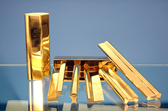
Brass lock core rod
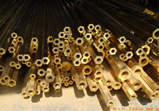
Hexagonal hollow rod

Special-shaped materials
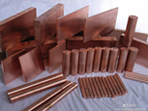
Pickaxe copper, electrode
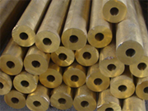
Copper sleeve
FAQ
What is the corrosion resistance of copper?
Answer: Copper has good corrosion resistance in general environments, but in certain specific environments (such as environments containing corrosive gases such as hydrogen sulfide and ammonia), corrosion may occur. Therefore, appropriate protective measures need to be taken when using in these environments.
How to choose the right copper material?
Answer: Choosing the right copper material requires considering many factors such as the use environment, mechanical properties, electrical conductivity, and corrosion resistance. The specific selection should be determined based on actual needs and usage conditions.
What is the processing performance of copper?
Answer: Copper has good processing properties and can be processed through various processes such as casting, forging, rolling, and drawing to make copper products of various shapes and specifications.
How to care for and maintain copper?
Answer: The main purpose of maintaining and maintaining copper is to prevent oxidation and corrosion. The copper surface can be cleaned regularly to remove dirt and oxides; when used in humid environments, attention should be paid to waterproofing and moisture-proofing; avoid contact with corrosive substances.
What factors affect the price of copper?
Answer: The price of copper is affected by many factors such as raw material prices, production processes, market supply and demand, etc. Among them, fluctuations in copper prices have a greater impact on copper material prices.
What is the environmental performance of copper?
Answer: Copper is a relatively environmentally friendly material that can be recycled and reused to reduce resource waste. However, during the production and processing of copper materials, certain environmental pollution may also occur. Therefore, measures should be taken to reduce environmental pollution and achieve sustainable development.
